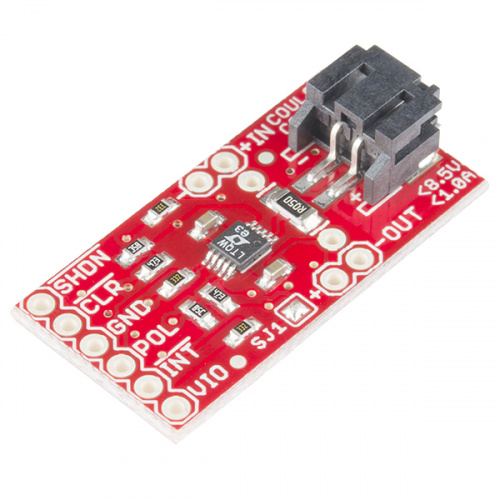LTC4150 Coulomb Counter Hookup Guide
Count your Coulombs
If you've worked with circuits a bit, you probably know that you can measure the current a circuit is using by using an ammeter (or more likely a multimeter on the amps setting), and that this is useful information to know.
Instantaneous current consumption is definitely useful, but sometimes you'd like to keep track of cumulative current use, especially when you're trying to determine how much power is left in a battery. Battery life is easy to predict for a circuit that uses a constant amount of current, but things get a lot harder when the circuit is doing different things at different times, like lighting up LEDs.
Consider the speedometer and odometer in a car. The speedometer is like an ammeter - it shows you your instantaneous speed, which is good to know, but it can't tell you how far you've gone unless you're constantly keeping track of it. This is the odometer's job; it constantly monitors your speed, accumulates it over time, and tells you how far you've traveled.
A coulomb counter is like an odometer for current. It constantly monitors the current your circuit is using, adds it up, and gives you a pulse each time a given amount of amp-hours have been used. With each pulse, you'll also get a "polarity" signal, which tells you which direction the current is flowing (great for rechargeable batteries!). By counting the pulses and direction, you can maintain an accurate count of how much power your circuit is removing from (or putting back into) your battery. If you start with a full battery, you'll always know exactly how much of it is left! Neat, huh?
Suggested Reading:
- What is a Circuit
- Voltage, Current, Resistance and Ohm’s Law
- Electric Power
- Battery Technologies
- How to Power a Project
- How to Use a Multimeter

